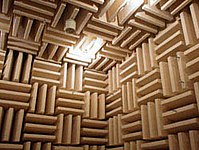
Photo from wikipedia
Cavity resonance is one of the important sources of tire noise. The measures commonly used for suppressing the cavity resonance is to paste sound absorbing material on the inner surface… Click to show full abstract
Cavity resonance is one of the important sources of tire noise. The measures commonly used for suppressing the cavity resonance is to paste sound absorbing material on the inner surface of the tire, which has been proved to be very effective by many experimental studies. But so far there is a lack of methods to assess the influence of absorbing material on the cavity resonance and help determine the optimal sound absorbing material for a tire. To resolve this problem, a method based on the eigenvalue analysis is proposed. In the method, the resonance of a tire cavity lined with sound absorbing material is turned into a complex eigenvalue problem of a closed cavity with prescribed boundary conditions. The real and imaginary parts of the complex eigenvalue can then be used to represent the influence of sound absorbing material on the cavity resonance. Experiments were conducted on a tire lined with polyurethane foams of different thickness and flow resistivity to validate the results obtained by the proposed method, and a good agreement between their results is achieved.
Journal Title: Acta Acustica united with Acustica
Year Published: 2019
Link to full text (if available)
Share on Social Media: Sign Up to like & get
recommendations!